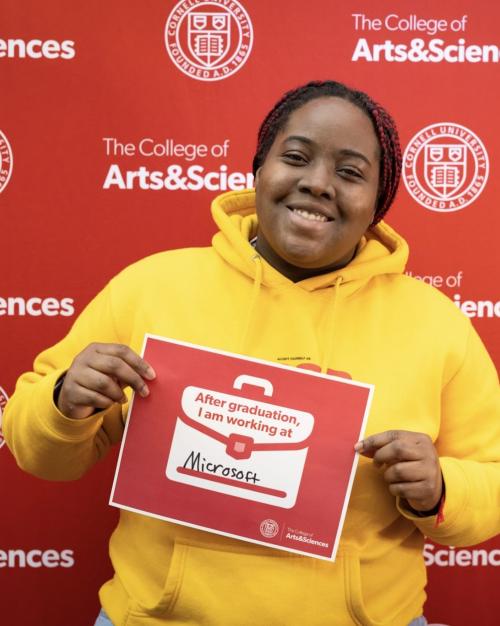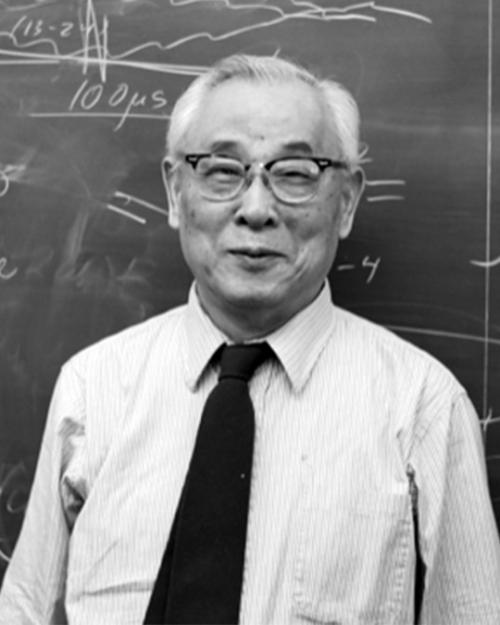Toichiro Kinoshita, the Goldwin Smith Professor of Physics Emeritus in the College of Arts and Sciences (A&S), died March 23. He was 98.
Kinoshita was known for his extensive calculations in quantum electrodynamics (QED). His calculation of the electronic moment of the electron contributed to some of the great physics discoveries of the 20th century, including the 1989 Nobel Prize. A collegial presence in the physics department, where he was known as Tom, he remained active well past retirement, publishing research into 2019.
“Professor Toichiro Kinoshita was a giant in precision calculations in quantum electrodynamics,” said Tung-Mow Yan, professor of physics emeritus (A&S). “The results of Tom and his team are still the best in the world.”
Kinoshita, who was at Cornell for six decades, was “dignified, kind, modest and a gentleman of few words,” Yan said.
“He dedicated about 50 years of his life to the most precise calculation we know of in particle physics – and perhaps in all of physics; a precise determination of anomalous magnetics moment of the electron, and also the muon,” said Csaba Csaki, professor of physics (A&S). “His results are now used for the most precise determination of the fine structure constant (essentially the electric charge of the electron) itself, and also for the measurement of the g-2 of the muon at Fermilab.”
Experimental results are still catching up to and confirming Kinoshita’s theoretical calculations, said Peter Lepage, the James S. Tisch Distinguished University Professor Emeritus of physics (A&S), who interacted with Kinoshita on numerical methods and collaborated on one paper with him.
“His focus on the integrity of his work on high-precision QED was off-scale,” Lepage said. “It’s a masterpiece of science. I’m amazed by Tom’s tenacity and extraordinary diligence.”
Kinoshita’s cumulative QED discoveries, with each successive calculation to pin down additional decimal places hugely more complex than the last, are his magnum opus, but he made other important discoveries, as well. His early work on understanding infrared divergences in quantum electrodynamics, known as the Kinoshita-Lee-Nauenberg theorem, is now textbook material. He also contributed to understanding of the J/Psi particle and the charm quark.
Many other scientists used the work of Kinoshita and his team, contributing to numerous discoveries. One such experimental breakthrough, the measurement of the electron anomalous magnetic moment by Hans Dehmelt, was awarded the 1989 Nobel Prize in physics. Dehmelt invited Kinoshita to join him at the Nobel ceremony, citing his “heroic” calculations.
Kinoshita did work at leading computing facilities, notably CERN in Geneva, Switzerland and KEK in Tsukuba, Japan. In 1990, he was contributing editor of Quantum Electrodynamics, a definitive volume summarizing the field.
Kinoshita was also part of a multi-institutional group working on quantum electrodynamics with Shinichiro Tomonaga, who shared the 1965 Nobel Prize in Physics with Richard Feynman and Julian Schwinger for the development of quantum electrodynamics.
His honors include fellowships from the Ford Foundation and the John Simon Guggenheim Memorial Foundation. He also received the J.J. Sakurai Prize from the American Physical Society, the SUN-AMCO Medal from the International Union of Pure and Applied Physics, the Gian Carlo Wick Gold Medal and the Toray Science and Technology Prize. He was a member of the National Academy of Sciences and a fellow of the American Physical Society.
Kinoshita was born in 1925 in Kurayoshi, a country town in western Honshu, the largest of the main Japanese islands. Excelling in academics, he won admission to the First Higher School in Tokyo and eventually to Tokyo Imperial University (now Tokyo University).
He began his doctoral research at the same institution in 1947 under Kunihiko Kodaira, a mathematician who would later become the first Japanese recipient of the Fields Medal.
In 1952, he completed his Ph.D. and was invited by the American physicist J. Robert Oppenheimer to the Institute for Advanced Study in Princeton, New Jersey. Following postdoctoral positions at Columbia University and Cornell, he joined the Cornell physics faculty in 1958. He was promoted to professor in 1963 and became Goldwin Smith Professor in 1992. He continued his research long after his retirement in 1995.
“When I arrived at Cornell in 2001 he was already retired, but amazingly he would be there every morning at nine (on most days before anyone else in the group) and stay till five, coming to every seminar and having lunch with us,” Csaki said.
Kinoshita is survived by his daughters Kay Kinoshita, June Kinoshita and Ray Mann; his sisters Michiko, Sachiko and Yuko; and six grandchildren. His wife Masako died in 2022.
Kate Blackwood is a writer for the College of Arts and Sciences.
This article originally appeared in the Cornell Chronicle.




